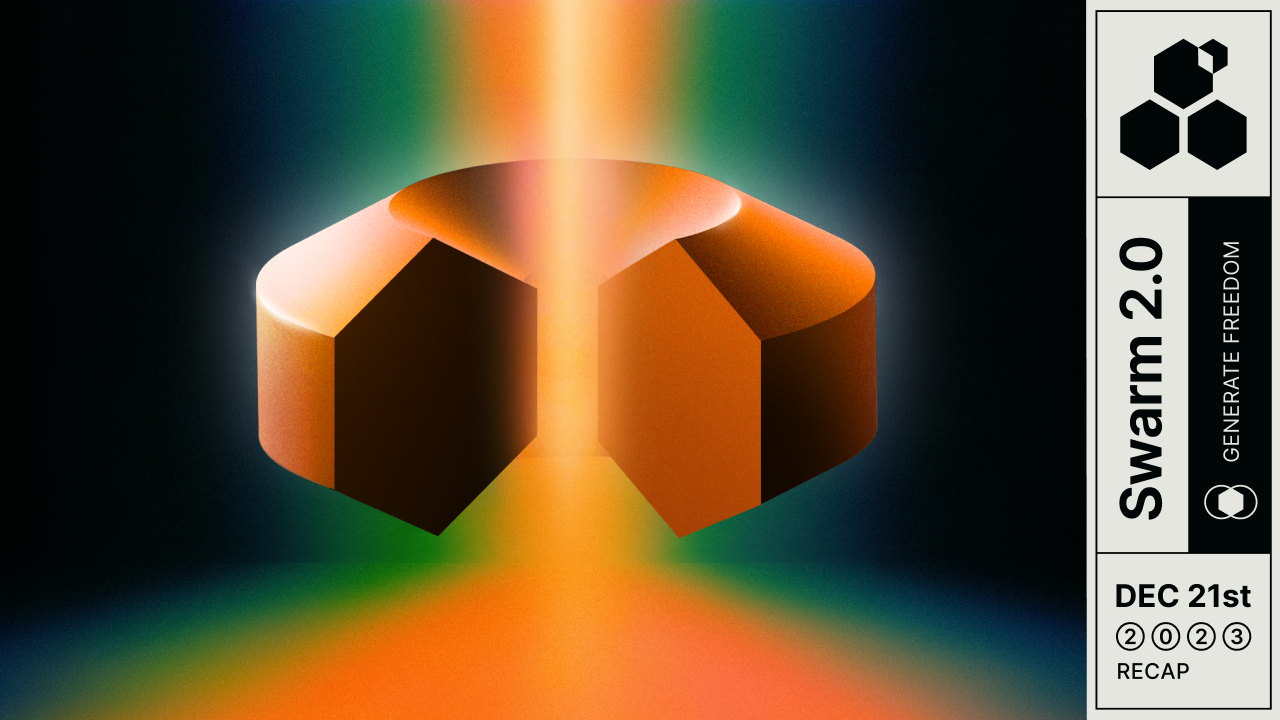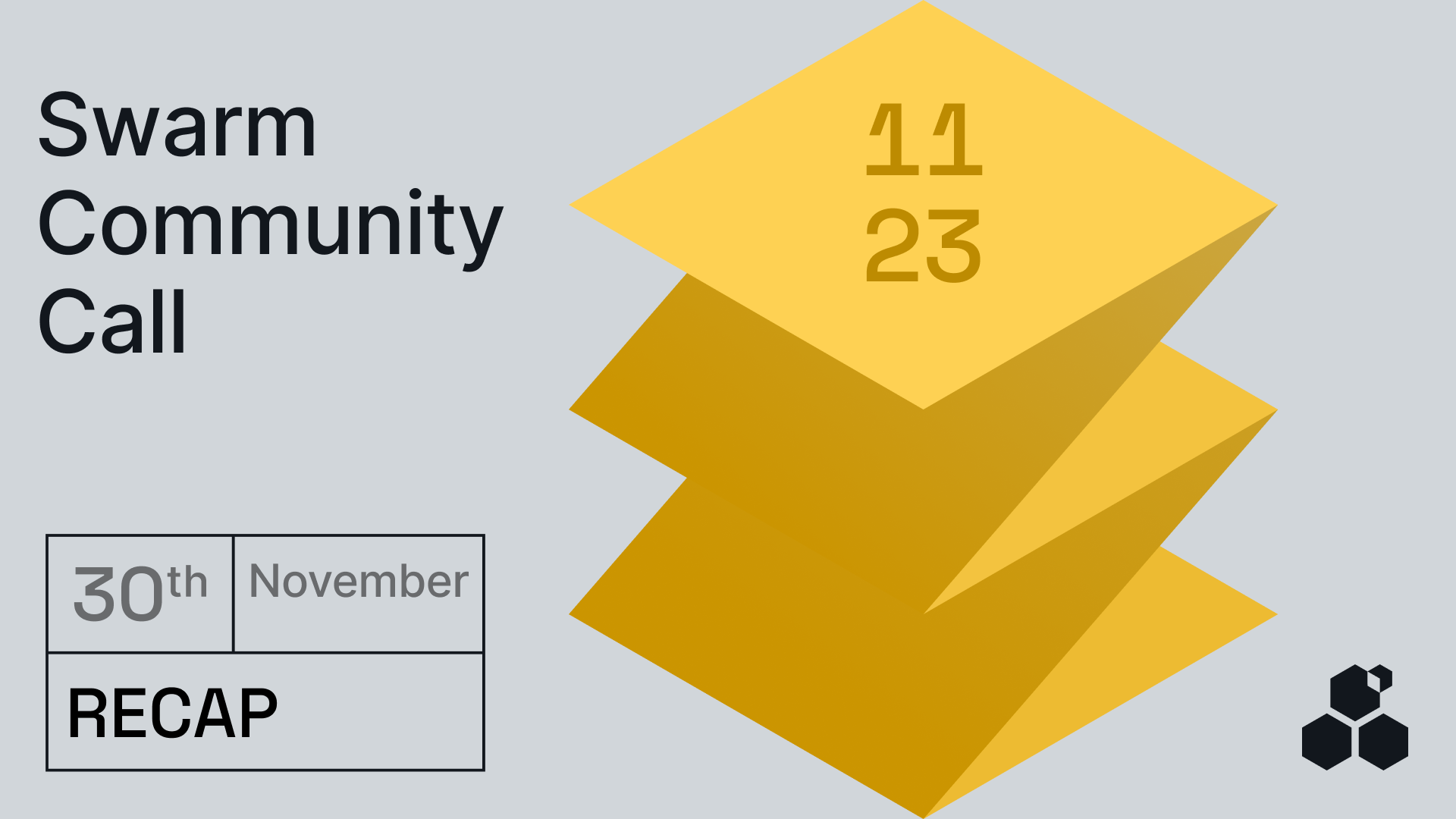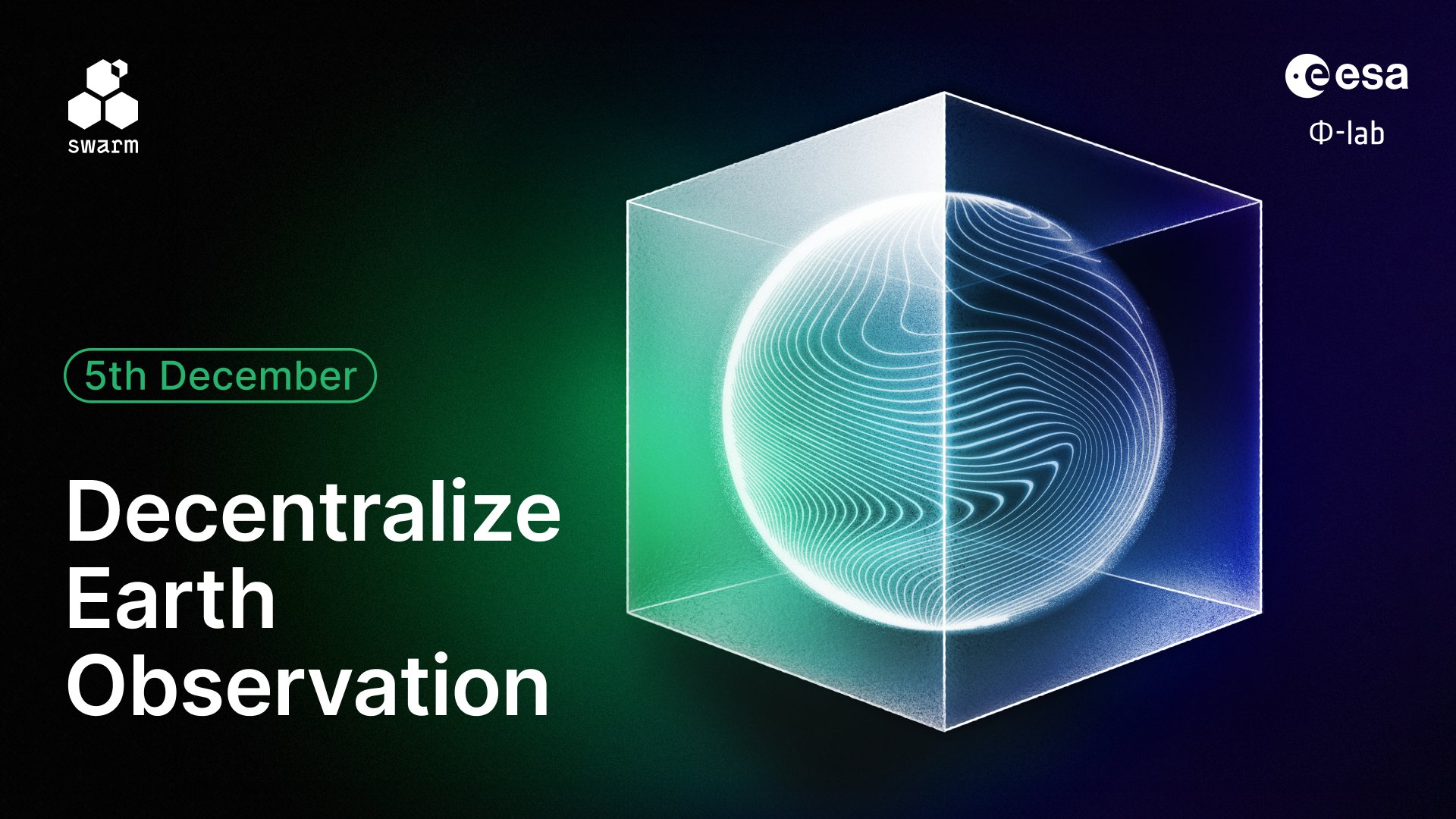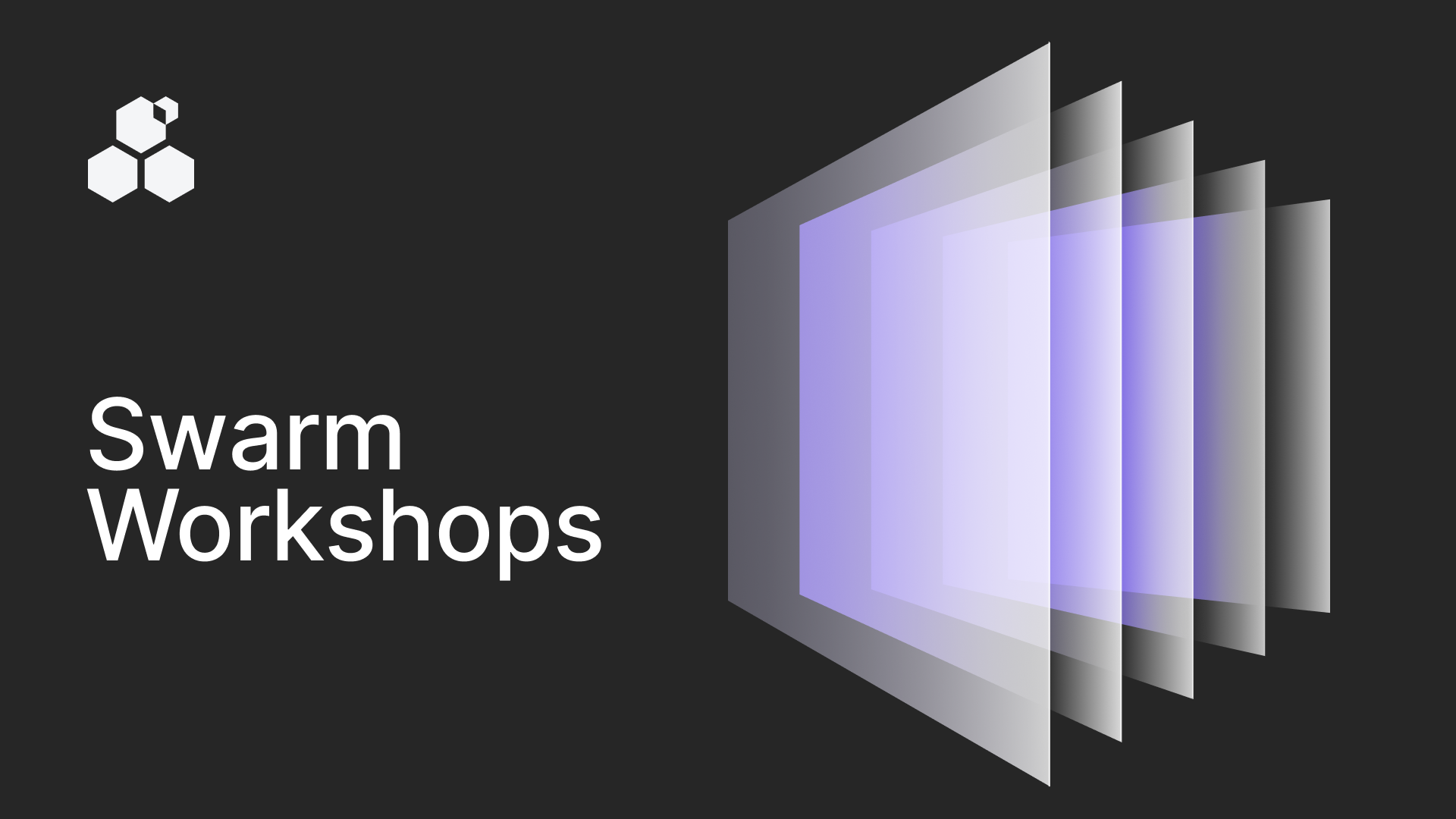Swarm 2.0 – a new level of reliability and decentralisation
For Swarm, the winter solstice is always the time for big announcements. And this year’s unveiling of Swarm 2.0 in an online event, simply titled “Swarm 2.0”, exceeded expectations. Swarm 2.0 introduces the decentralised Price Oracle and erasure codes to the Swarm network, creating something utterly unique in the decentralised storage space.
Viktor Trón, one of Swarm’s co-founders, set the stage with his introductory address: “It is a peer-to-peer decentralised storage provision system with decentralised price control that is resilient to different forms of attack and which brings proper market conditions to storage provision.” The result is a profound leap in secure decentralised data storage, creating a completely self-sufficient and decentralised system.
Additionally, Callum Toner from the Swarm Foundation’s (SF) Research Track emphasised that Swarm 2.0 represents a perfect storage system with incentives that aligns supply and demand. “This is also what really sets Web 2.0 and Web3 apart, the underpinned incentives,” Callum added.
Moreover, the implementation of erasure codes adds a whole new level of data availability to the network. With a 99.999999% availability assurance Swarm guarantees data availability that easily rivals even the biggest incumbents. Erasure codes can make up for all the swings in the state of the network, always ensuring perfect uploads and downloads.
Add hardened privacy and security mechanisms, and you get a Swarm network that is ready for enterprise-level adoption.
Better network visibility with four public dashboards
To underscore its commitment to the open-source credo, the Swarm Foundation released a set of new public dashboards that increase network visibility and transparency.
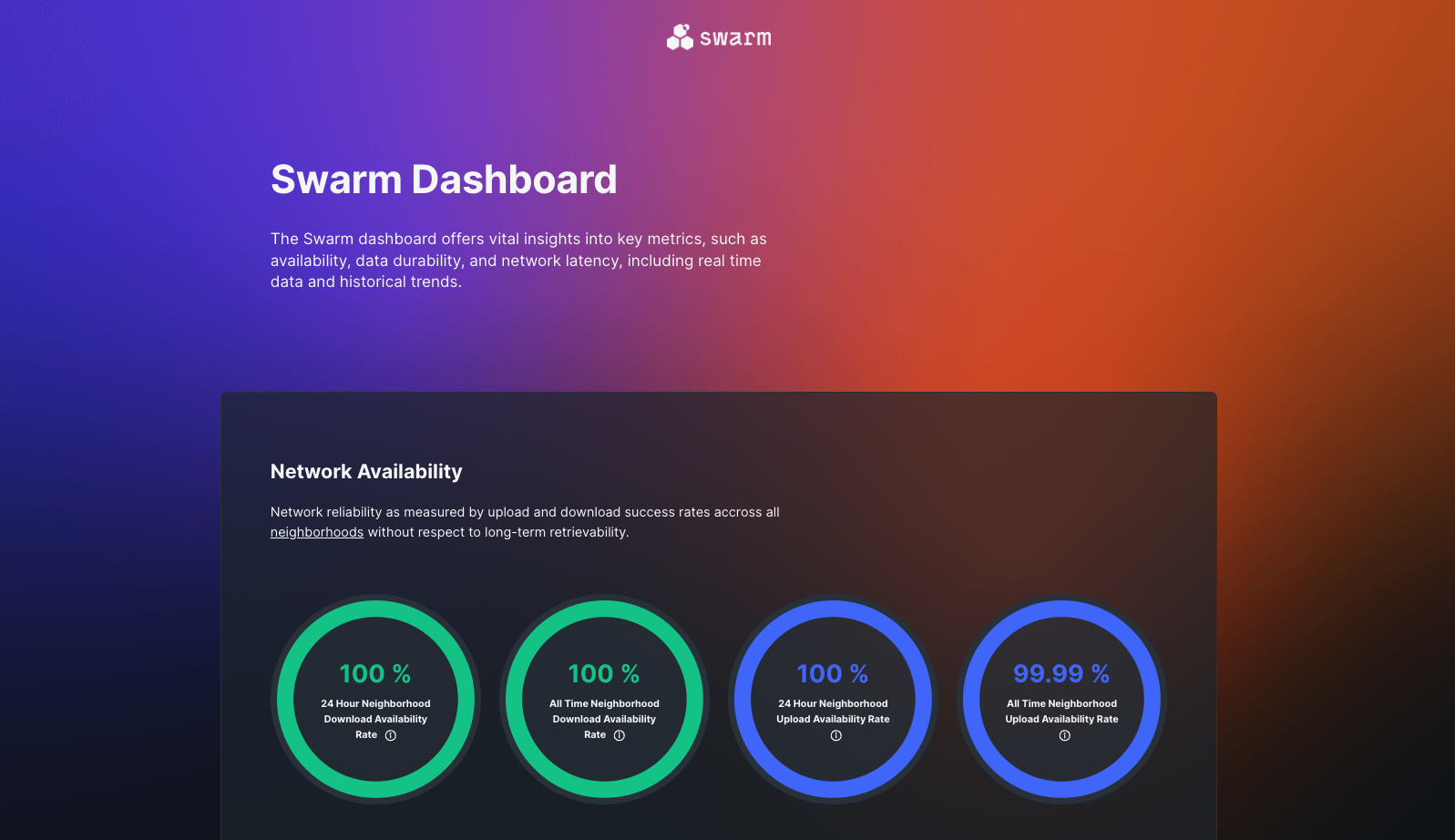
Impressive network growth in 2023

2023 was a year of tremendous growth for the Swarm network. Since March, its node count has increased manifold, Črt Ahlin explained.
One of the driving forces behind this expansion is the Great Data Upload (GDU) initiative—a mission to store humanity’s public data on the Swarm network, making it censorship-resistant, private and secure, while remaining available to the public. This initiative furthers Swarm’s mission to be a platform for positive social impact atop of which a fair data economy can grow.
To sustain this growth momentum, Črt announced a heightened focus on nurturing and advancing the node operator community. Recognising their crucial role in providing data storage, Swarm will introduce a “Node Operator of the Year” award in Q2/Q3 2024 to acknowledge their contributions.
For those interested in becoming node operators, Swarm’s welcoming and very helpful Discord community (node-operators channel) is THE place to start. To make things even easier, Swarm has forged a partnership with Dappnode to provide a plug-and-play solution.
Forging new collaborations with ESA and Polygon
In furtherance of the GDU initiative, SF has struck strategic collaborations with the European Space Agency’s Phi Lab and Polygon Village. All three parties have co-created and co-signed the Decentralise Earth Observation (EO) Manifesto to mark the collaboration.
The manifesto is a starting point on a journey to employ decentralised technologies to keep the EO data accurate, trustworthy, verifiable, open and accessible.
Having EO and other public data stored in Swarm can produce measurable positive social impact. Readily available high-resolution satellite imagery has the potential to profoundly influence decisions on everything from environment, transport to city planning and other areas of public life. More details on the collaboration will be revealed in the coming weeks, so keep following this blog and Swarm Foundation’s profile on X.
Putting the community at the centre
To build further on the decentralised nature of the project, the Swarm network is transitioning to a community-driven developmental approach.

For this purpose, SF has published all of its most relevant papers for anyone interested in building on and expanding Swarm’s tech. This includes the Whitepaper, The Book of Swarm, Swarm specification and the Erasure Coding paper (publishing pending).
The Foundation has also launched a Fellowship programme targeting highly motivated teams aiming to build an alternative client for the network.
The final piece of the community-centred approach is including the community in not only submitting Swarm improvement proposals (SWIPs) but evaluating them as well. This inclusive approach will enrich the network’s development, enhancing its utility and uniqueness, as explained by Niki Papadatou from Swarm Foundation.
A vibrant ecosystem is building on Swarm
At the same time, the event was an opportunity to showcase some of the more promising projects currently building on Swarm:
- Etherjot allows you to easily create static websites written with Hugo/Jekyll or import markdown blogs (the blog you are reading was created using Etherjot);
- Fairdrive uses Swarm to create privacy-centric data storage solutions akin to decentralised Dropbox, catering to both end-users and developers;
- Datafund demonstrated Creator pods that will allow content creators to easily monetise their work while retaining full ownership over it;
- DeBOOT showed how one can boot a system image from anywhere using Swarm;
- Metaprovide offered a glimpse into what sharing, organising and backing up files looks like in Web3.
Become part of the Swarm, #generate freedom
In the following segment, SF’s director, Gregor Žavcer, delved into the profound and ongoing impact of AI on society. Using an AI-generated video of himself, he highlighted how major AI players are still perpetuating the data-hoarding practices adopted from Web 2.0 companies.
“This not only limits our freedom but creates a power imbalance. And it’s not just about privacy, it’s about keeping what is valuable to us safe,” he warned. This is the point where decentralised AI can make a difference.
It has the power to return to the data owners the value it creates, all while respecting their privacy and human rights. “This is where Swarm shines. It’s not just another tech platform, it’s a movement. A movement that stands for privacy, data ownership and ethical ways to make data work for us,” AI Gregor concluded.
Switching back to real life, he emphasised the importance of keeping the data open, immutable and verifiable in an age of rising censorship, AI-generated content and the flood of fake news. “Now more than ever, it is becoming important to have an infrastructure that is open, decentralised, censorship-resistant, immutable and a public good on top of which we can actually build the digital future we want to live in,” he added, making a firm case for Swarm’s continuous relevance.
Science fiction dreams coming true
Viktor Trón took the event’s digital stage last. In his closing address he touched on the pitfalls of Web 2.0 concerning privacy and the treatment of individual’s data. Web3 can help mitigate them, Viktor believes, and the Swarm network has a role to play.
“With the Price Oracle and erasure codes we have completed Swarm’s base features. The science fiction ideas that we have incubated over the years can become a reality, including decentralised service networks, video transcoding or a supply-based marketplace. These projects are all in the making and with the Swarm base layer being ready will hopefully become a reality. It’s a precursor to a kind of Cambrian explosion that will result in exponential growth,” Viktor concluded.
Discussions about Swarm can be found on Reddit.
All tech support and other channels have moved to Discord!
Please feel free to reach out via info@ethswarm.org
Join the newsletter! .
